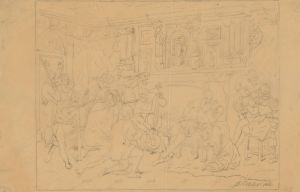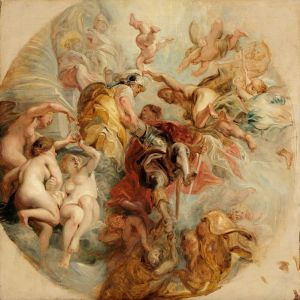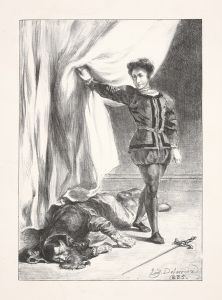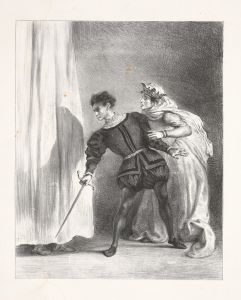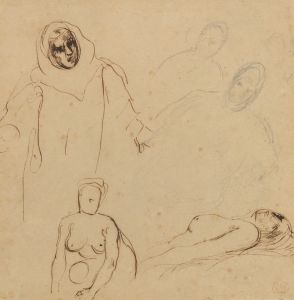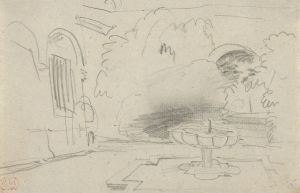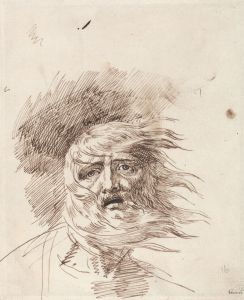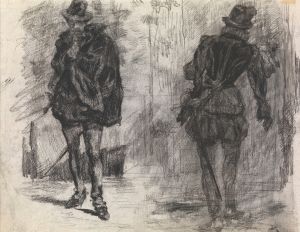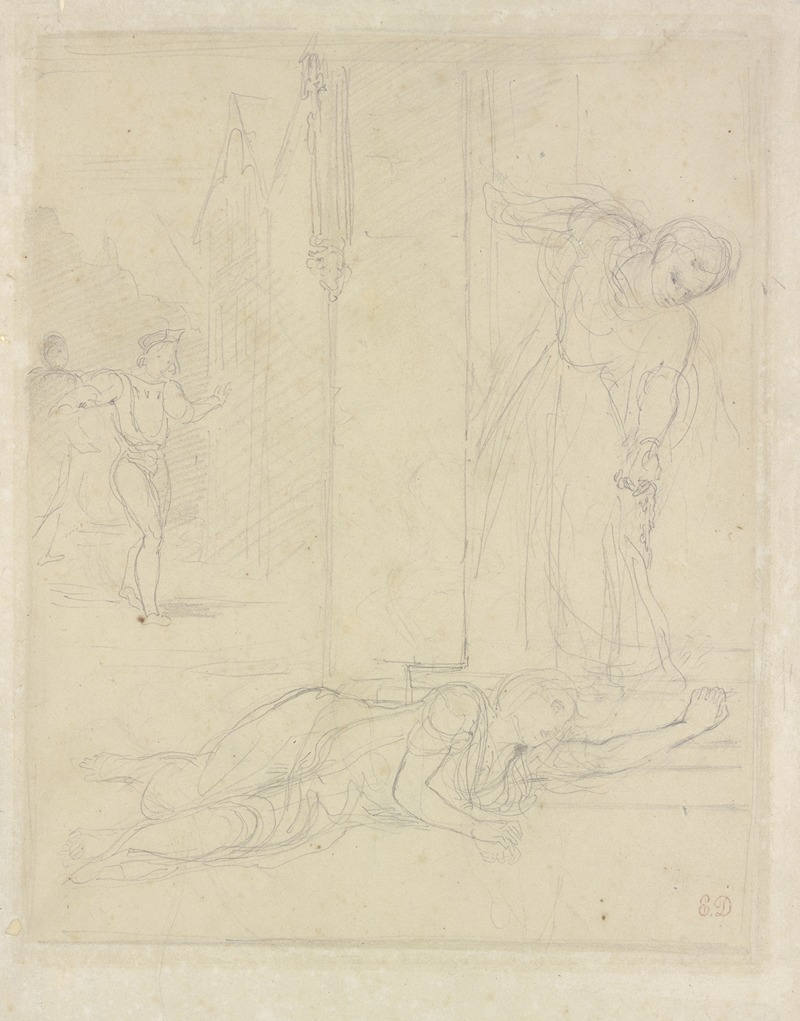
Scene from Hamlet
A hand-painted replica of Eugène Delacroix’s masterpiece Scene from Hamlet, meticulously crafted by professional artists to capture the true essence of the original. Each piece is created with museum-quality canvas and rare mineral pigments, carefully painted by experienced artists with delicate brushstrokes and rich, layered colors to perfectly recreate the texture of the original artwork. Unlike machine-printed reproductions, this hand-painted version brings the painting to life, infused with the artist’s emotions and skill in every stroke. Whether for personal collection or home decoration, it instantly elevates the artistic atmosphere of any space.
Eugène Delacroix, a prominent French Romantic artist, created the painting "Scene from Hamlet" in 1839. This artwork is one of several that Delacroix produced, inspired by William Shakespeare's plays. Delacroix had a profound admiration for Shakespeare, whose works were becoming increasingly popular in France during the 19th century. The Romantic movement, to which Delacroix belonged, often drew inspiration from literature, history, and exotic themes, and Shakespeare's dramatic narratives provided rich material for artistic exploration.
"Scene from Hamlet" depicts a moment from Shakespeare's tragedy "Hamlet," which tells the story of the Prince of Denmark as he seeks revenge against his uncle, who has murdered Hamlet's father, taken the throne, and married Hamlet's mother. Delacroix's painting captures the intense emotion and psychological complexity of the play, which are hallmarks of both Shakespeare's writing and Delacroix's artistic style.
In this particular painting, Delacroix chose to illustrate a scene involving Hamlet and Horatio, his loyal friend. The composition is notable for its dramatic use of color and light, which Delacroix employed to convey the tension and mood of the scene. The figures are rendered with dynamic brushstrokes, a technique characteristic of Delacroix's work, which adds to the sense of movement and emotional intensity.
Delacroix's interest in Shakespeare was part of a broader cultural trend in 19th-century France, where the Bard's works were being translated and performed more frequently. This period saw a renewed interest in Shakespearean drama, which was embraced by the Romantic movement for its exploration of human emotion and the complexities of the human condition. Delacroix's paintings of Shakespearean subjects, including "Scene from Hamlet," reflect this fascination and contribute to the Romantic reinterpretation of classical themes.
The painting is also significant for its reflection of Delacroix's broader artistic goals. As a leading figure of the Romantic movement, Delacroix sought to break away from the strictures of Neoclassicism, which emphasized order and rationality. Instead, he embraced emotion, individualism, and the sublime, all of which are evident in his interpretation of Shakespeare's work. Delacroix's use of vivid colors, expressive brushwork, and dramatic compositions helped to redefine the possibilities of painting in the 19th century.
"Scene from Hamlet" is housed in the Louvre Museum in Paris, where it remains an important example of Delacroix's engagement with literary themes and his contribution to the Romantic movement. The painting continues to be studied and admired for its artistic innovation and its ability to capture the enduring power of Shakespeare's tragedy. Through works like this, Delacroix not only paid homage to one of the greatest playwrights in history but also expanded the expressive potential of visual art.





